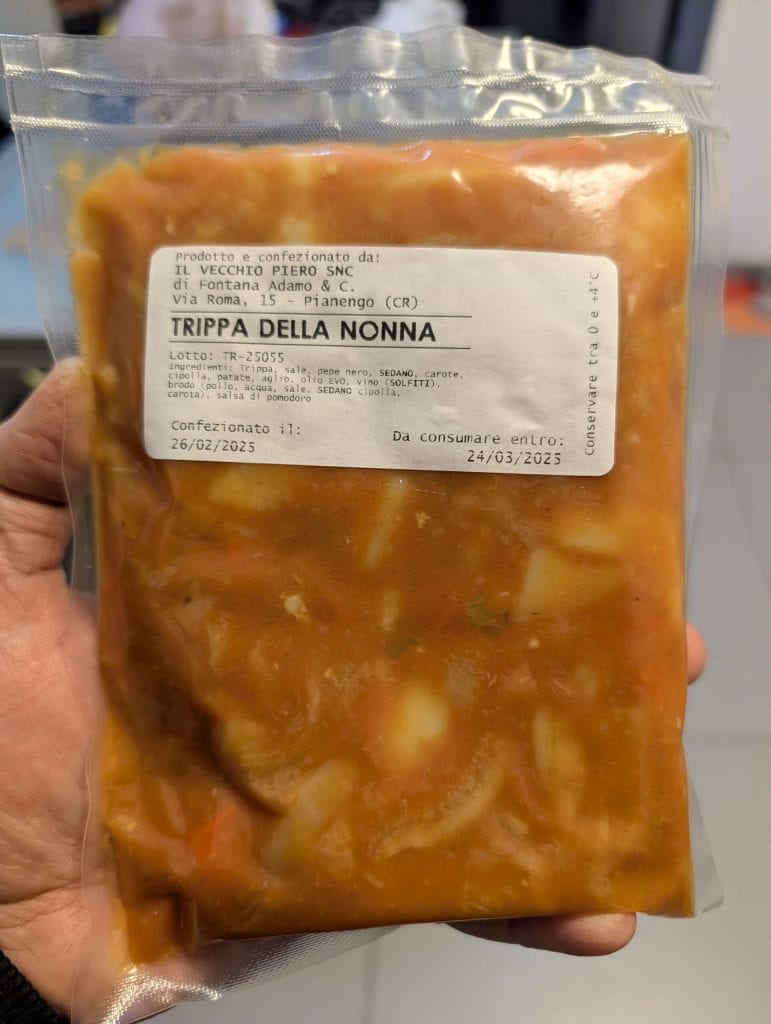Dear food lovers, today we dive into a journey through time, an adventure that will lead us straight to the heart of Italian culinary tradition.
Get ready to rediscover a dish that has nourished generations, an ode to simple and authentic flavors: tripe with potatoes, a recipe that smells of home, family Sundays, and wise grandmothers.
Don’t be fooled by its apparent simplicity, tripe with potatoes is a masterpiece of balance, a harmony of textures and flavors that blend into an enveloping embrace.
The tripe, with its unique texture and bold taste, perfectly matches the sweetness of the potatoes, creating an irresistible contrast. Every spoonful is a dive into the past, a memory of slow lunches and chats around the table.
A dish that warms the heart and soul, making us feel at home wherever we are.
And today, I will guide you step by step in preparing this delight, revealing all the secrets to achieving a perfect result, just like grandma’s.
Get your aprons ready, sharpen your knives, and turn on the stoves, because the journey into taste is about to begin!
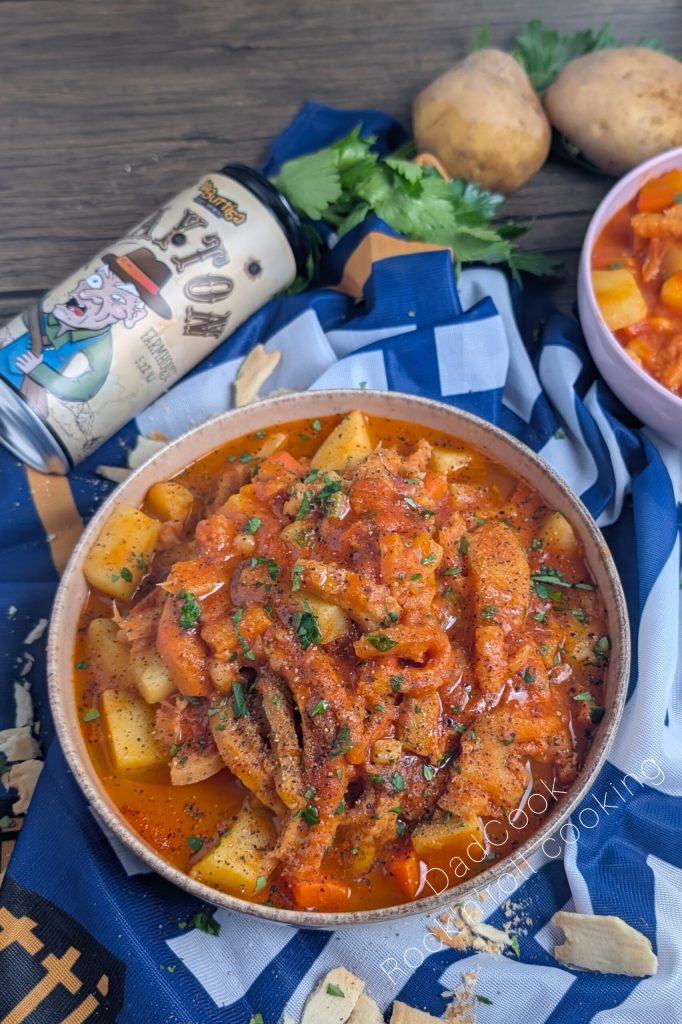
- Difficulty: Very easy
- Cost: Very economical
- Rest time: 30 Minutes
- Preparation time: 20 Minutes
- Portions: 4
- Cooking methods: Boiling, Slow cooking, Stovetop
- Cuisine: Italian
- Seasonality: Autumn, Winter, All seasons
- Energy 585.78 (Kcal)
- Carbohydrates 36.88 (g) of which sugars 2.13 (g)
- Proteins 41.24 (g)
- Fat 30.55 (g) of which saturated 9.59 (g)of which unsaturated 16.17 (g)
- Fibers 5.32 (g)
- Sodium 1,201.00 (mg)
Indicative values for a portion of 700 g processed in an automated way starting from the nutritional information available on the CREA* and FoodData Central** databases. It is not food and / or nutritional advice.
* CREATES Food and Nutrition Research Center: https://www.crea.gov.it/alimenti-e-nutrizione https://www.alimentinutrizione.it ** U.S. Department of Agriculture, Agricultural Research Service. FoodData Central, 2019. https://fdc.nal.usda.gov
Ingredients
To bring this traditional dish to life, here are the ingredients that will accompany us on this culinary journey.
- 2.2 lbs tripe
- 1.32 lbs potatoes
- 3 carrots
- 3 stalks celery
- 1 onion
- 3 cloves garlic
- 5.3 oz rolled pancetta
- 3.2 cups tomato purée
- 1 glass white wine
- 3.2 cups chicken broth
- 1 drizzle extra virgin olive oil
- 1 bunch parsley
- to taste coarse salt
- 1 pinch black pepper
Tools
To prepare our tripe with potatoes at its best, here are the essential utensils.
- 1 Casserole Lagostina
- 1 Cutting board Niro
- 1 Knife Shan zu
Steps
Tripe with potatoes is a journey into the flavors of yesteryear. To make this journey unforgettable, I have divided the preparation into 5 essential steps, rich in tips and secrets.
Preparing the bases:
Let’s start with the flavors that will give life to our dish.
Wash and trim the vegetables: cut the carrots and potatoes into thick chunks, to maintain a rustic and pleasantly crunchy texture even after long cooking.
Finely chop the celery and onion, to blend harmoniously in the sauté.
Finally, cut the pancetta into cubes: it will be the first ingredient to brown, releasing its savory and enveloping fat.

The sauté and cooking of the tripe:
In a large pot, pour a drizzle of extra virgin olive oil and brown the pancetta over low heat, until golden and crispy.
Then add the onion and garlic, letting them gently wilt. Deglaze with a generous glass of beer or white wine, scraping the bottom of the pot to collect all the flavors.
At this point, add the tripe, previously boiled and cut into strips, and let it soak in the sauté, stirring carefully.
Add the carrots and tomato purée, seasoning with pepper.
Cover and let cook over low heat for at least 2 and a half hours, stirring occasionally and adding meat broth if necessary.

The potatoes and completion of cooking:
When the tripe is tender but still firm, add the potato chunks and hot chicken broth, just enough to barely cover the vegetables.
At this point, adjust the salt, tasting to check the seasoning, and add, if desired, a pinch of pepper.
Continue cooking for about another hour, or until the potatoes are cooked but still slightly crunchy and the broth has reduced into a thick, flavorful sauce.
Stir gently from time to time to prevent the potatoes from sticking to the bottom of the pot.

Rest, final seasoning, and serving:
A crucial step, often overlooked, is resting.
Turn off the heat and let the tripe with potatoes rest for at least 30 minutes, ideally 60.
This will allow the flavors to meld and intensify, reaching the peak of their goodness.
Before serving, reheat the tripe over low heat, until it is hot and steamy.
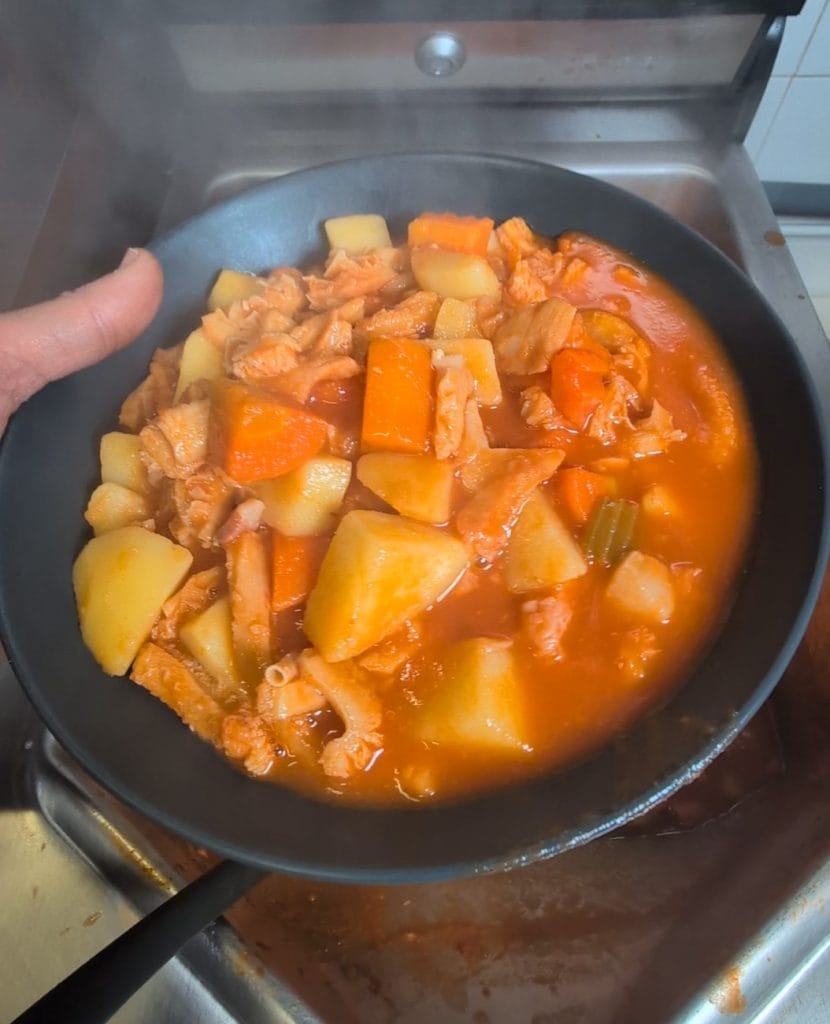
Serving and tasting:
Generously plate our tripe with potatoes, pouring a generous ladleful of this steaming delight into each deep plate. Let the intense and enveloping aroma fill the air, anticipating the pleasure that follows.
If desired, add a touch of color and freshness with a handful of fresh chopped parsley, and a sprinkle of grated Parmigiano Reggiano, for a burst of flavor that will delight the palate.
Take a forkful, close your eyes, and let yourself be transported by the authentic flavors of this traditional dish.
A true journey through time, a tribute to the simple and genuine flavors that warm the heart and soul. Enjoy your meal!

Like every traditional recipe, tripe with potatoes lends itself to variations and personalizations. Here are some useful tips to make this dish even more delicious, along with ideas for tasty variants and storage instructions.
Storage:
Refrigerator: Tripe with potatoes keeps well in the refrigerator for 2-3 days. It is important to store it in an airtight container to preserve freshness and flavors.
Freezer: If you wish to keep it longer, you can freeze it. Divide it into individual portions and store them in containers suitable for freezing. It keeps for up to 3 months.
Reheating: To reheat the tripe, it is advisable to do so over low heat, in a pot, stirring occasionally. Alternatively, the microwave can be used. If frozen, thaw in the fridge first, then reheat slowly.
Tips:
Quality of the tripe: The tripe should be well cleaned and pre-boiled before use.
Sauté: A well-prepared sauté is the basis of this dish’s flavor. Take the necessary time to let the vegetables gently wilt.
Resting: Resting before serving is essential to allow the flavors to meld.
Pairings: Tripe with potatoes goes well with good rustic bread for sopping up the sauce.
Variations:
Roman Tripe: Add mint and grated Pecorino Romano to the sauté.
Florentine Tripe: Use tomato paste in the sauté and serve with toasted bread croutons.
Tripe and Beans: Add cooked cannellini beans to the tripe while cooking.
Spicy Tripe: Add chili pepper to the sauté.

FAQ (Frequently Asked Questions)
Tripe with potatoes is a classic of Italian cuisine, a dish that evokes memories of home and tradition.
Despite its simplicity, there are often doubts about its preparation and ingredients.
Here are some of the most frequently asked questions, with clear and useful answers for preparing a perfect tripe with potatoes.
Should I use pre-cooked or raw tripe? Answer:
Pre-cooked tripe is more convenient and quicker to use, but raw tripe, if well-cleaned and pre-boiled, can provide a more intense flavor. If using raw tripe, it is essential to boil it for a long time to make it tender.

Can I replace pancetta with another ingredient?
Of course! You can use guanciale, speck, or sausage, depending on your preferences. Although pancetta gives an extra touch to this dish.
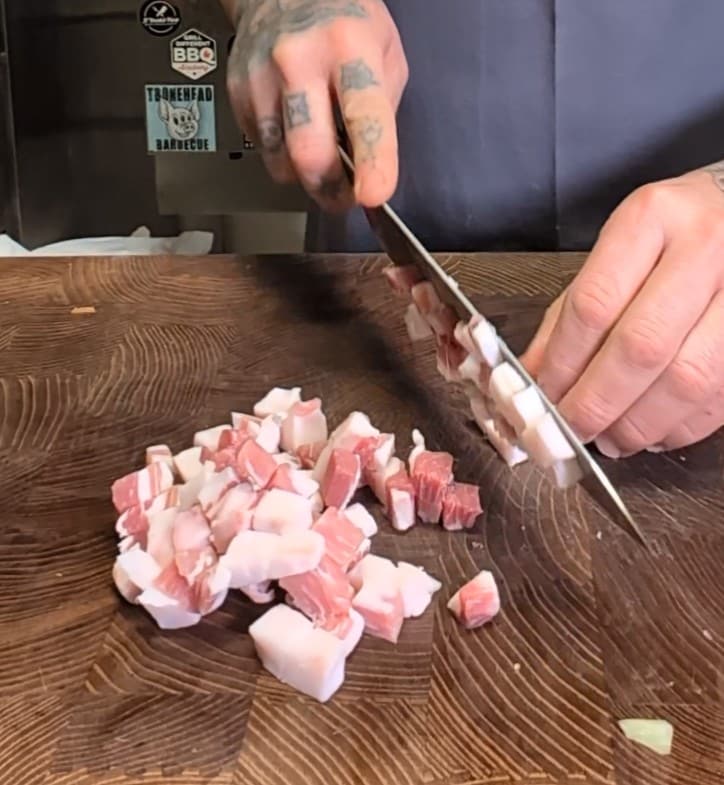
How long should I cook the tripe?
Tripe requires slow and prolonged cooking. Generally, it cooks for at least 2 and a half hours, until it becomes tender. It’s important to stir occasionally and add broth if necessary.
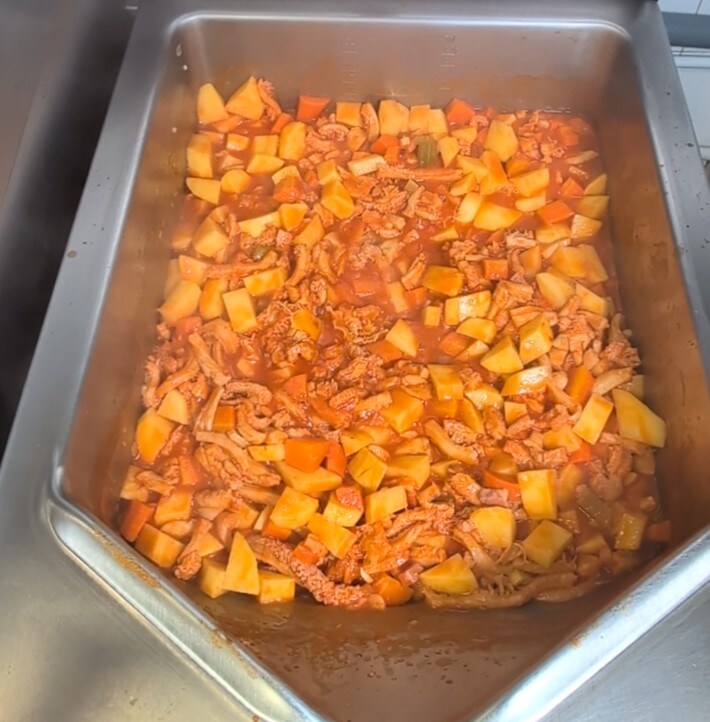
Can I add other vegetables besides potatoes and carrots?
Absolutely yes! You can add celery, peas, beans, or other seasonal vegetables to your liking.
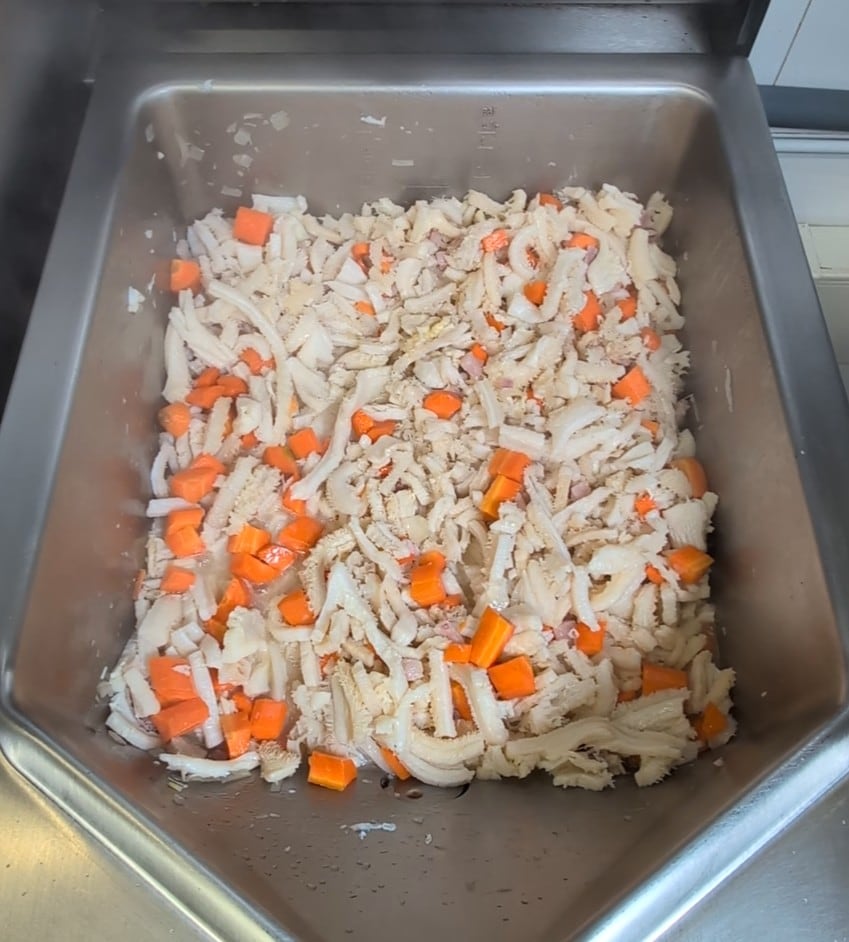
How can I make the sauce thicker?
If the sauce is too liquid, you can let it reduce over low heat, uncovered, during the last minutes of cooking. Alternatively, you can add a tablespoon of concentrated tomato purée.

How do I store leftover tripe?
Leftover tripe keeps in the refrigerator for 2-3 days, in an airtight container. You can also freeze it, in single portions, for up to 3 months. When reheating, it’s best to do so over low heat.
